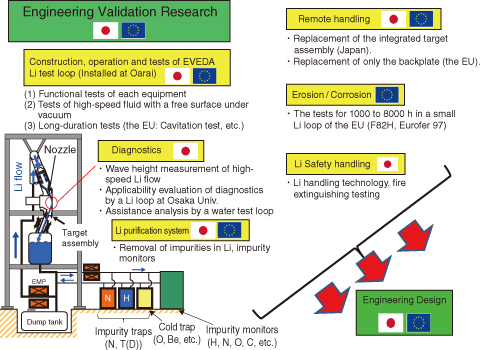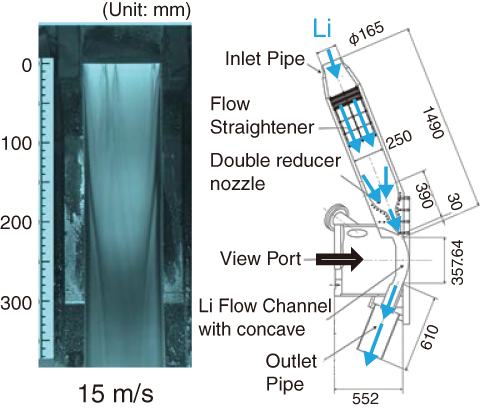
Fig.9-10 Contents of engineering validation and engineering design activities of the lithium facility of IFMIF/EVEDA

Fig.9-11 An image of high-speed Li flow with a free surface (left) and the flow channel (right)

Fig.9-12 Validation tests of the welding and cutting by a fiber laser
In fusion reactors, the phenomena of irradiation hardening and irradiation embrittlement of materials occurs due to the displacement damage and nuclear transformation products (e.g., H and He) in materials caused by 14 MeV neutrons produced by the fusion reaction (D–T reaction). The amount of neutron irradiation of materials in ITER, whose construction is currently underway, is several percentage points below the goal for fusion DEMO reactors, and is therefore not sufficient for the evaluation of materials developed for use in DEMO reactors. Therefore, it is essential to evaluate the dependency of the irradiation dose on the materials and components in the irradiation environment for 14 MeV neutrons with a high-intensity like that at IFMIF.
In IFMIF, two deuteron beams of 125 mA at 40 MeV (beam Size: 200 mm width and 50 mm height) were injected into a liquid lithium target (260 mm width, 50 mm height, 25 mm thickness) at 250 ℃, having a free surface in a vacuum (10−3 Pa), and neutrons were generated. At present, EVEDA are being conducted at IFMIF as one of the BA activities in collaboration between Japan and the EU.
We are conducting engineering validation tests and design of the Li facility in IFMIF, as shown in Fig.9-10. We constructed and are operating the EVEDA Li test loop with the world’s largest flow rate (3000ℓ/min), which is a prototype for the IFMIF Li facility, and we are acquiring the validation test data required to determine the construction of IFMIF. In the evaluation of this high-speed Li flow, observation by a video camera (Fig.9-11) and measurement by a developed noncontact wave-height laser meter revealed that a stable flow could be formed not only at positive pressures but also at negative pressures. As an engineering validation test of remote-control technology, adaptability tests of cutting and welding using a fiber laser were conducted to replace the equipment (called a target assembly) in the Li facility, and some of good results were obtained (Fig.9-12). The 6500-page intermediate engineering design report for the entire IFMIF facility was created in FY 2013, and was based on these engineering validation tests.